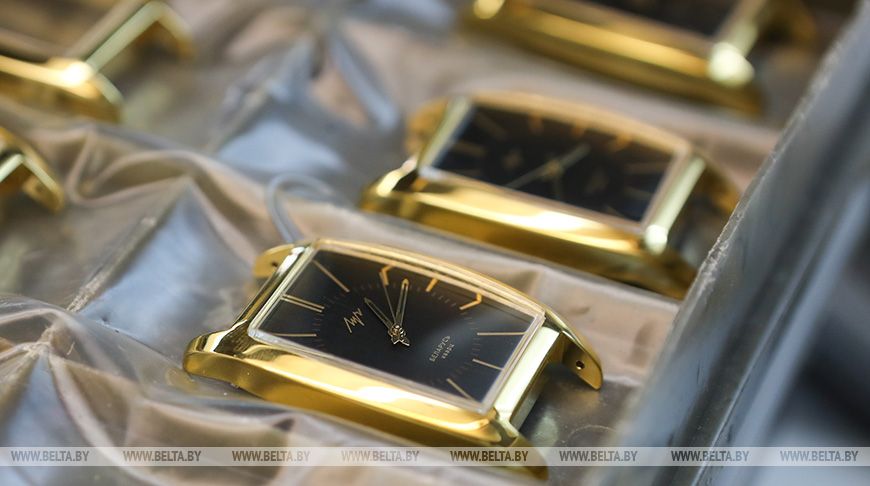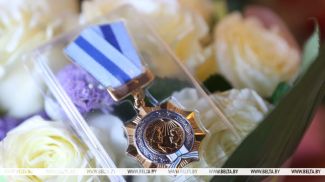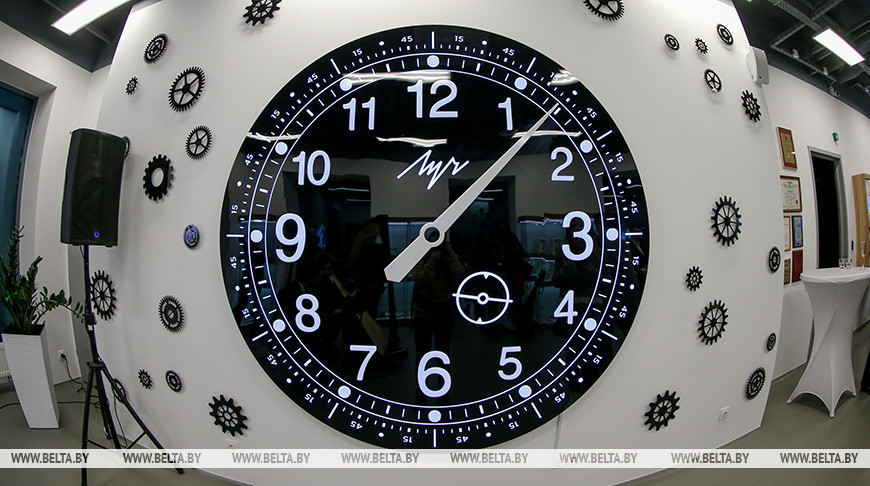
An archive photo
Obsolete equipment and technologies. Hence, poor sales. That was what Aleksandr Lukashenko saw at the plant in 2009. The anti-crisis manager assured that the company was doing everything it could. But that was definitely not enough. In this episode of BelTA's YouTube project After the Fact: Lukashenko’s Decisions, we will tell you about the terms that Lukashenko set for a Swiss investor, why Luch makes gelatin applicators and what collection sold out in a few hours this year.
How did the story of Minsk Watch Plant begin?
The construction of Minsk Watch Plant began in the Belarusian capital in 1953. Luch old-timers called the enterprise "a women's factory". It was built in the post-war period, mainly by women. The staff consisted mostly of female workers, too. Target customers were, again, women. Later, it started making men's watches as well. There were eleven watch factories in the Soviet Union. The Minsk one was thriving.
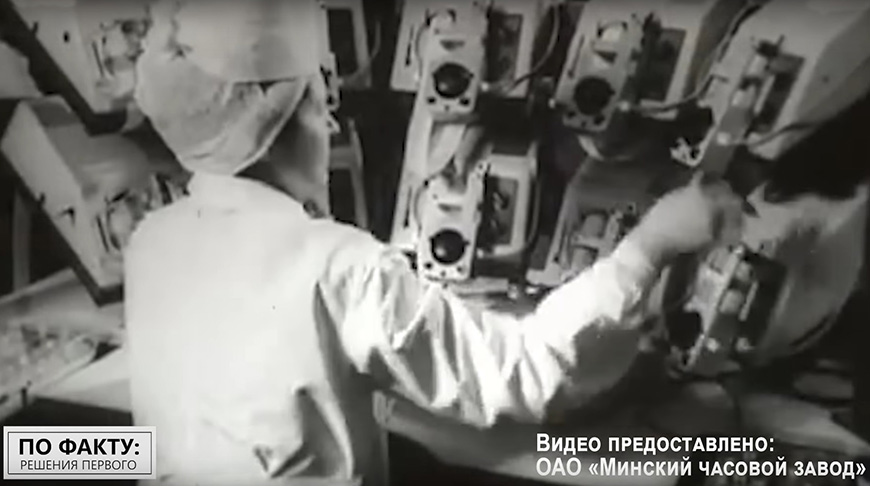
“After graduating from university, I got my job assignment at the plant and came to work here in 1979. At that time, microelectronics was a booming industry. That was my job. This year I will mark 45 years with the company. It was a very powerful enterprise. The plant employed about 6,000 people. Taking into account its subsidiaries, the total number of workforce was about 10,000. The plant was thriving. It operated a lot of workshops, employed a lot of people. Work was in full swing. The demand for watches was high and steady,” said Nikolai Kharchevnikov, Minsk Watch Plant retired worker.
Why did the company go down in the mid-1990s?
The good times for the Minsk plant ended with the beginning of perestroika. Million-dollar orders stopped. Markets were gone, too. The plant needed to learn how to survive in the new realities.
“With perestroika things went downhill. Shuttle traders would buy watches in bulk, take them to Moscow and other regions of Russia,” said Nikolai Kharchevnikov, Minsk Watch Plant retired worker.

“The output fell somewhat. When I came to work at the plant, it employed 8,000 people. In its heyday the plant produced up to 11 million watches. Then came a recession and decline in production. Times were hard. But we survived,” said Eduard Lange, lead design engineer.
In 1996 the plant became a private property. The new owner did not ramp up production. He rented out part of the premises. Or sold it for offices. The number of employees reduced tenfold. Those that remained operated the equipment from the 1970s. The road to bankruptcy took ten years. The state had to take on the debts of the plant and to re-nationalize it.
“It was a turning point. The plant was in a very difficult situation. The question was what to do with the plant. It was deep in the red. Lukashenko came and settled the situation. An investor was found. Things changed. We regained confidence in the future: we had an investor, new plans, new projects. In my opinion, Lukashenko's visit was a landmark event. Hadn't he taken the plant under his wing, things might have ended differently,” Nikolai Kharchevnikov said.
Who invested in Minsk Watch Plant?
Five foreign companies from Switzerland and China were interested in working in Belarus. Lukashenko met with representatives of the Swiss company Franck Muller at Luch. The president made it clear that the terms of cooperation should be mutually beneficial. An investor is not seen as the last resort. The state is capable of solving any problem, including the search and training of designers.
“It is not true that you can't buy a clockwork drive. We can attract a good partner, for example, a privately-owned company. We will offer lucrative terms in other types of business and ask this partner to help us with clockwork drives. We will start with small steps. Meanwhile we will put together a team of really smart people (3 to 5 people). They will make the core of the future design bureau. We will pay good money. We will do it. The state can handle any task. But there is another way, which is being discussed now, and that is the way of a strategic investor,” Aleksandr Lukashenko said as he visited Minsk Watch Plant in October 2009.
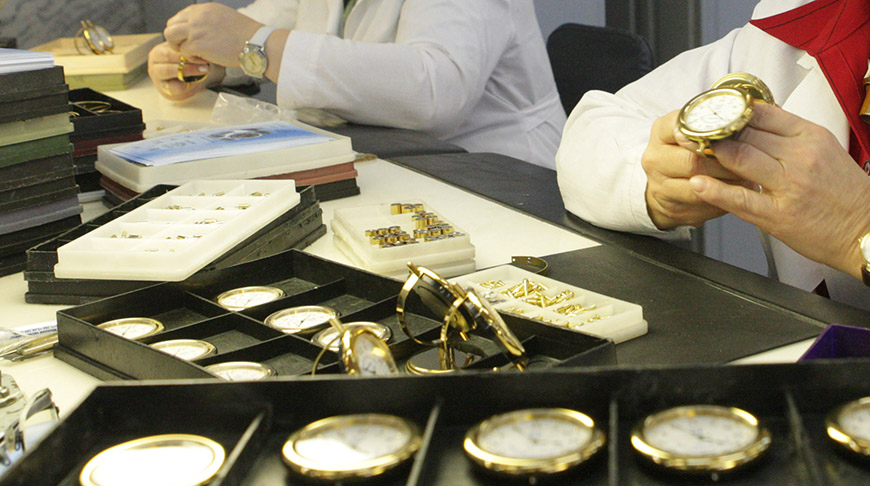
The Swiss investor promised to revive the watch production in Minsk, to supply modern equipment. And, what was important, to retain the team and raise the salary to the Minsk average. But the workers of the plant were still wary. They were afraid of being deceived again.
“We didn't know who would come, what they would bring and what goal they would pursue. There were concerns. It was something new. Any new thing is worrisome. We didn't know how the investor would behave, what they would do,” Nikolai Kharchevnikov said.
In what countries are Belarusian watches sold?
Since 2010, the Swiss company Franck Muller has owned 80% percent of the shares of Minsk Watch Plant. Thus, the Minsk company got a new lease on life, though things are not always easy. Yet, challenges are now different. It is no longer about providing employees with full-time jobs, but about finding new markets and developing exclusive designs. Belarusian watches tick all over the world.

“Last year we sent our watches to Trinidad and Tobago. And I think, it was the 59th country where our products were delivered specifically from the online store. We also have dealers in Germany, Bulgaria, a lot of dealers in Russia. We ship them watches and to sell via their networks. Our store employees have told us that very often Belarusians who come to buy our watches, set them to Minsk time and send them to their friends in other countries. We have recently launched a collection dedicated to Belarusian Language Day. Every year we release a Mother Tongue collection. The latest one sold out in just a couple of days. A customer who came to pick up his watch from the store was going to send it to his children in Toronto,”said Rafik Sargsyan, Deputy Director for Development, Minsk Watch Plant.
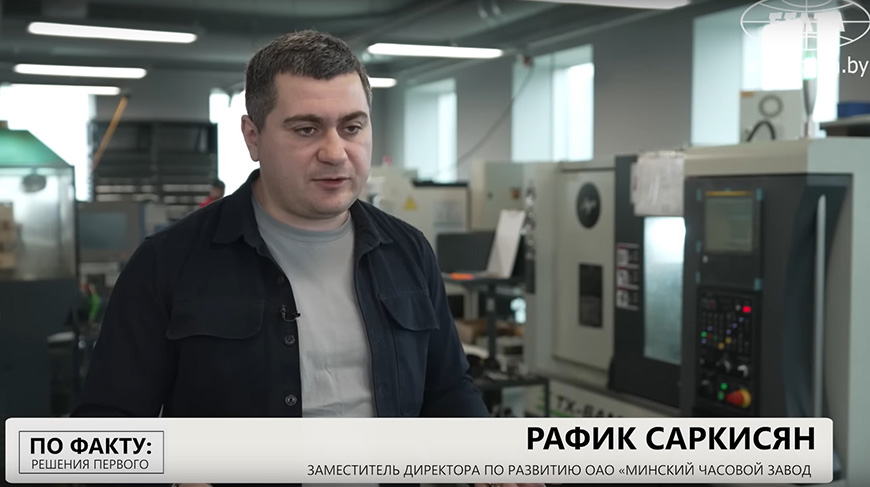
What equipment is used at Minsk Watch Plant?
Most of the equipment cannot be found anywhere else in Belarus. Our country is famous for its large agricultural machinery. The production of watch parts requires high-precision machines that can produce and process tiny details.
“Watch cases are made in the metalworking workshop. We have a set of turning machines and CNC machines. Metal comes here in the form of a disc with a slot. An important detail - these machines process stainless steel like the one that I am holding in my hands, and also aluminum parts. We also process titanium. I think in 6 or 5 months we will launch an experimental collection made from Damascus steel. This steel has a certain pattern. The case made from this steel needs special chemical treatment to retain these patterns,” Rafik Sargsyan said.
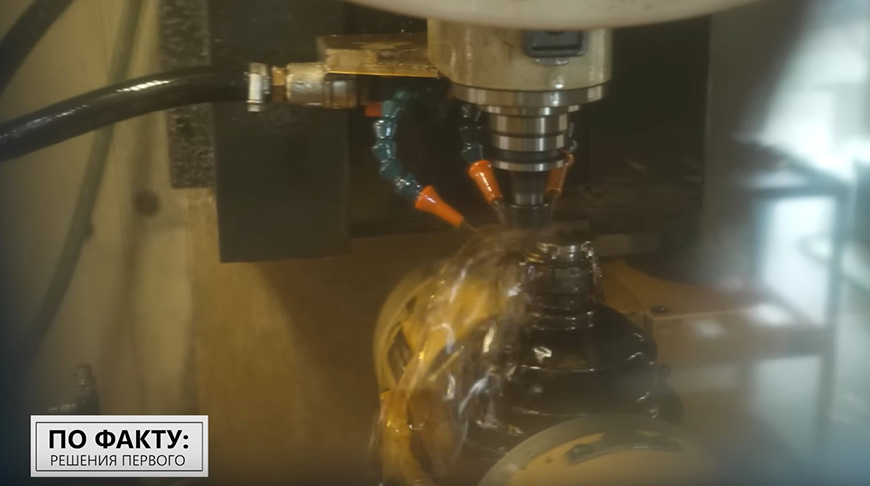
Almost all metal processing processes are automated. But the programs are set manually. The metal is transformed into a blank plate. And then everything is done according to drawings. This pertains to the location of holes for lugs and a crown. The most tricky part is the back cover of the case.
“Every collection has certain water resistance properties. The internal processing of the case, the caseback and the case closure is done by these precision machines. This way all the quality requirements are met,” Rafik Sargsyan said.
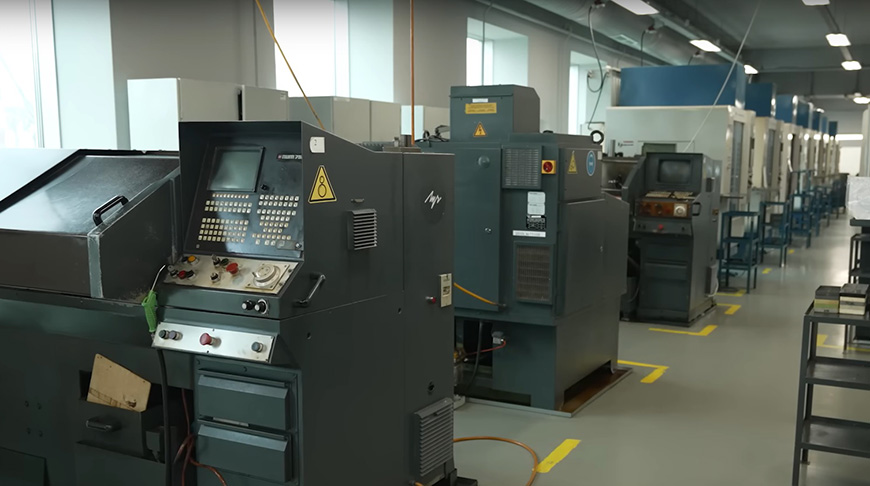
It takes about thirty minutes to make a metal disc. About the same amount is needed to process it on CNC machines.
“Here we have five-axis CNC machines that turn a processed disc into a full-fledged case with all the details, holes for the crown, the strap and all the sockets. They are covered in oil because during processing it is cooled with oil so that it does not crack. After this we get a finished case with burrs (burrs are common in metal processing). Burrs are removed using special machines or knives,” said the deputy director for development of Minsk Watch Plant.
“Here we have five-axis CNC machines that turn a processed disc into a full-fledged case with all the details, holes for the crown, the strap and all the sockets. They are covered in oil because during processing it is cooled with oil so that it does not crack. After this we get a finished case with burrs (burrs are common in metal processing). Burrs are removed using special machines or knives,” said the deputy director for development of Minsk Watch Plant.

A big advantage for the company is that it can make its own drawings and transfer handwritten designs into a computer. This allows fulfilling orders for other companies.

“We often get orders for some small parts, as we have machines and competences to make them. We get a drawing, process and measure it. After this, our team transfers it into a computer program. They set our machines to work specifically with this drawing. They transfer the program to the control panel. And the work begins,” Rafik Sargsyan said.
How does the company decide on the dial design?
All stages are equally important in watch production. Each of them determines the quality of the final product. There is no room for errors as details are tiny. If measurements are inaccurate, a watch will not work.
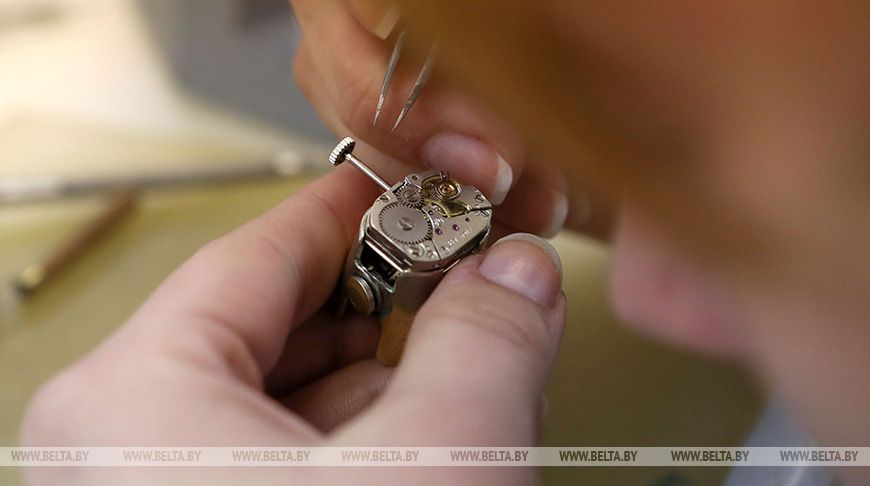
“There are special slots into which a dial is inserted and fixed. Here we solder these tiny elements that are subsequently inserted into these slots to secure a dial. Depending on the mechanism, these elements may be inserted in different places,” Rafik Sargsyan explained.
The dial design is a different story. After all, many choose watches based on their design. The models dedicated to Van Gogh’s paintings, Alena Kish’s motifs and the Belarusian language created a sensation.
The dial design is a different story. After all, many choose watches based on their design. The models dedicated to Van Gogh’s paintings, Alena Kish’s motifs and the Belarusian language created a sensation.
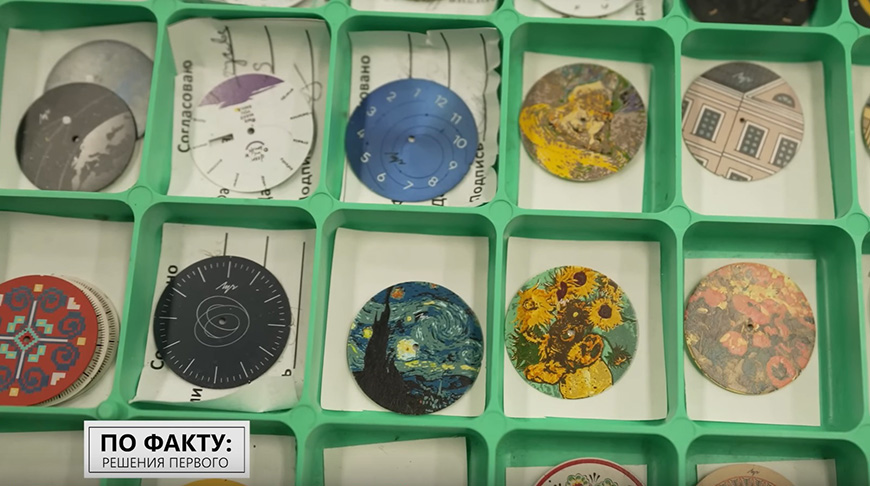
“When paint is applied, it gets into these slots. The excess paint is removed with a knife. After this, we use a special gelatin applicator (we make it on our own, because its texture is important) to carefully transfer the mold onto the dial. This way patterns appear on the dial. It takes one strike. There are dials where you need to make 15 strikes. In other words, 15 different matrices. It takes 15 strikes to take a mold from different matrices and transfer it into different places on the dial to create a final design. If a worker strikes in the wrong place, a watch is considered defective,” Rafik Sargsyan said.
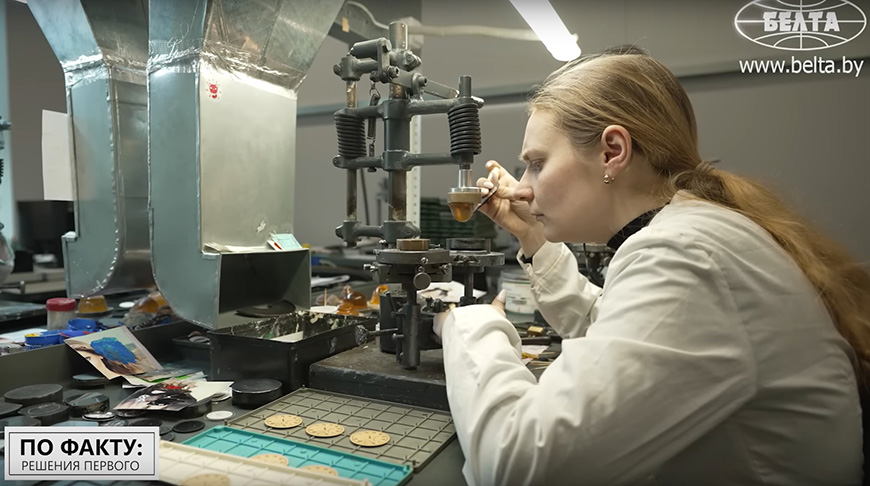
What influences the design of the Belarusian watch?
Only women are capable of performing such scrupulous work. Men lack patience, yet excel in general design.
Only women are capable of performing such scrupulous work. Men lack patience, yet excel in general design.

“I work on external design of watches. The enterprise has developed its own mechanism. I work with case details: glass, dials, covers. The process starts with the marketing department studying the world watch industry market. It then submits suggestions to our design department. After we have developed all the details, layouts, made all the dimensional calculations, we hand the drawings to our technologists,” Eduard Lange said.
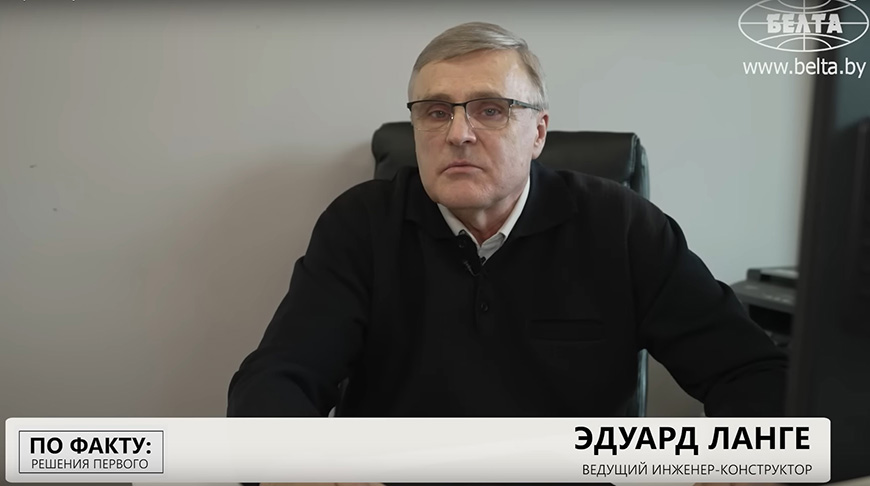
Watch design depends on technical capabilities of the enterprise. The more advanced equipment it has, the wider scope of activities its designers have. Everything matters here, including the shape, material, and even the pattern.

“We used to make watch cases from brass and electroplated them. CNC machines enabled us to make them from galvanized steel. Even the glass we made was plastic or plexiglass. Now we have switched to the production of mineral and sapphire glass,” Eduard Lange said.
Passing on the knowledge and expertise to young specialists
Engineers admit that modern technology makes work much easier. Design programs and new equipment are available now. But none of this will work without human knowledge and expertise.
“I used to supervise students. Many left but some decided to stay. I find it necessary to train young specialists. After all, knowledge gained at a university is not enough. Our production has its specifics. I share my knowledge and expertise with students,” Eduard Lange said.

The experimental workshop team comprises the most experienced employees. They test and finalize new models here. Now they are working on the most expensive collection in history.
Details are kept secret. The only thing which is known is that it took about two years to develop the collection.
“Our plant is a symbiosis of youth and experience. We have workers who have been assembling watches for 50 years. There are those who have worked here for 20-30 years,” Rafik Sargsyan said.
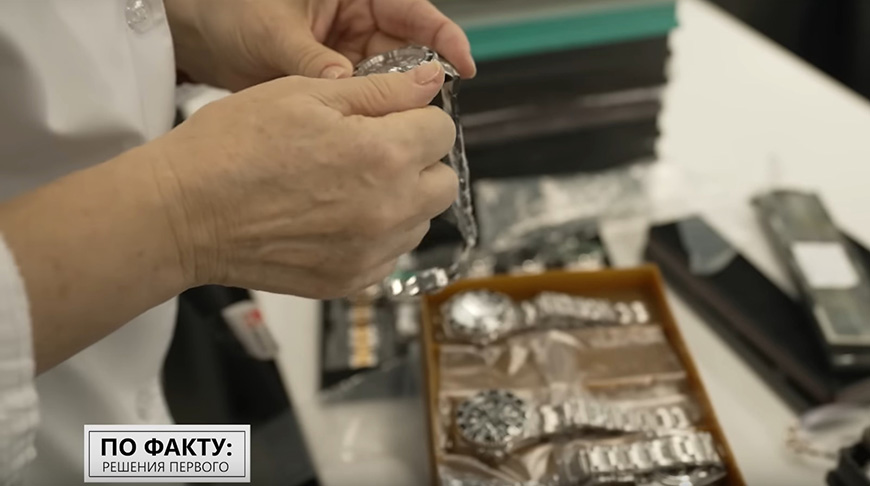
What Belarusian watches became the most popular model
The one-hand watch did not become an instant hit. At first, sales were quite slow. Later, the demand skyrocketed. The company holds this model valuable for yet another reason.
“This is our most popular product. What is still interesting and unusual about this watch is that it is mechanical and uses the Belarusian watch movement. Watch movement 1809. In general, there are about ten countries across the globe that produce watch movements. This list includes Belarus,” Rafik Sargsyan said.
One more interesting detail is that in order to show the time correctly, a watch itself needs... time. Watches do not get to the store immediately after being assembled.
“Depending on the movement and the watch itself, the assembled products lie on our tables for a certain amount of time. The quartz watch has to undergo an hours-long check. The watch is set and tested. If the watch runs correctly, the straps are fitted and the watch is sent to the finished product warehouse. After that the watch is delivered to customers or stores. If some element of the movement malfunctions and the watch starts lagging behind, it is disassembled, checked and reassembled. The watch is tested again before finally leaving the workshop,” Rafik Sargsyan said.
How many watches does Minsk Watch Plant produce a month?
To gain a strong foothold on the market, one can make small batches of exclusive watches. Such a product will cost a lot.
Luch, however, has decided to go the other way. The people's brand is a brand for people. It means that every Belarusian should have an opportunity to find a watch they can afford. This policy does not prevent the company from releasing limited collections.

“We work with large volumes of watches. Some Russian watchmaking brands produce 6,000 watches a year. This is our monthly output. And it sells out. Plans are in place to increase the monthly output to 10,000 watches within the next two years. The demand keeps increasing. We know where else we can sell our watches,” Rafik Sargsyan said.
Luch actively develops its factory tours. Watchmaking process captivates both children and adults. A museum was opened here in 2020 to retrace the history of the Luch plant. In the difficult Covid times the museum welcomed some 1,000 visitors a month. The Watchmaking Museum opened to visitors in December 2023. The museum houses more than 200 models, including carriage, pocket and modern watches.

“We have plans to expand. The space will be used not only as a museum but also as a venue for watch collectors to gather and speak about their activities,” Rafik Sargsyan said.
“We should not lose our watch plant. It is the intellect of the nation. There are more countries that produce aircraft and helicopters than watches. Not every country can produce a watch. To lose these competencies means to lose the brains of the nation,” the head of state said as he visited Minsk Watch Plant in October 2009.
